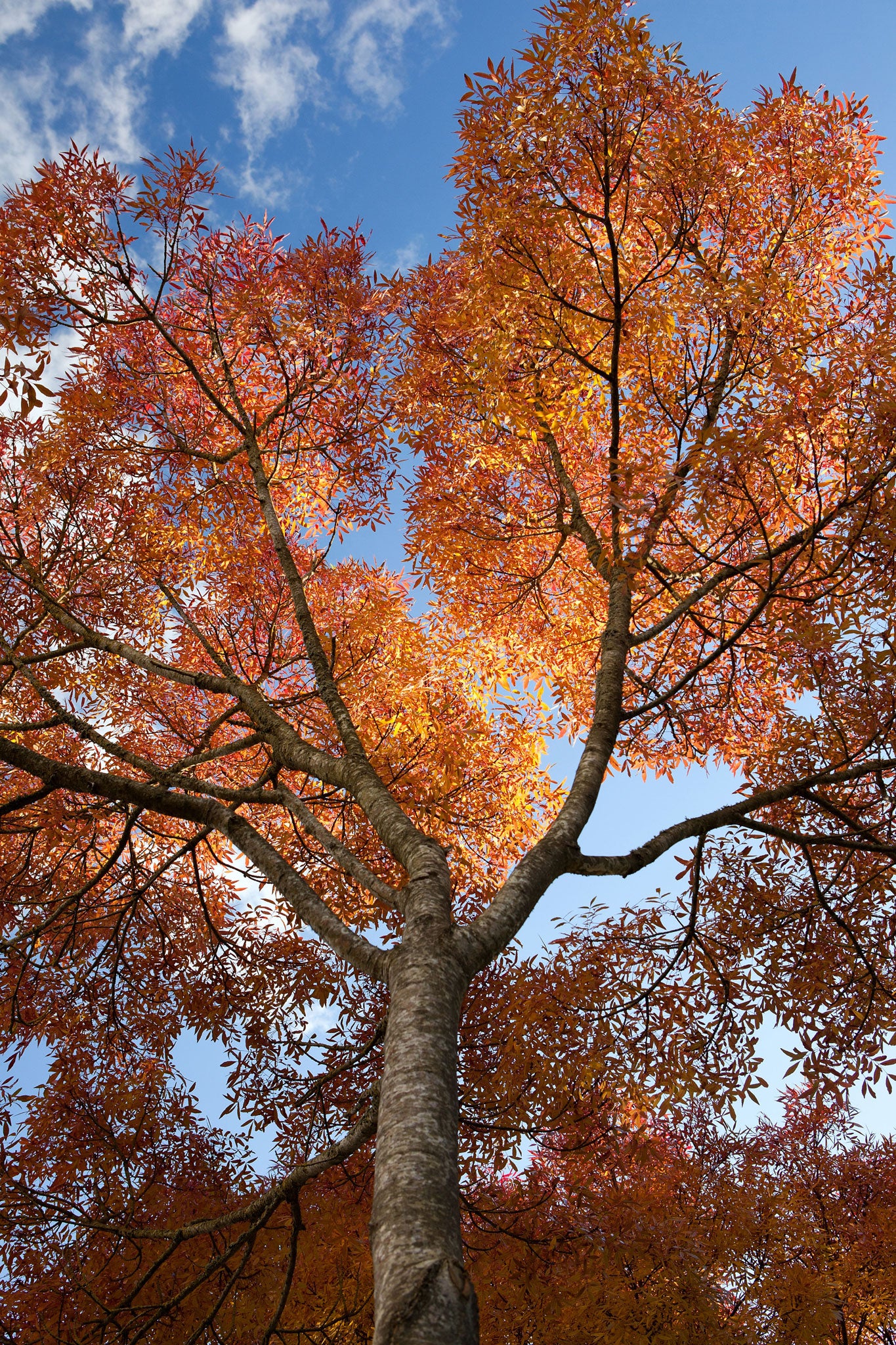The Independent's journalism is supported by our readers. When you purchase through links on our site, we may earn commission.
Emma Townshend: "I'm enchanted by the ash tree's transformation to a glorious orange"

Your support helps us to tell the story
From reproductive rights to climate change to Big Tech, The Independent is on the ground when the story is developing. Whether it's investigating the financials of Elon Musk's pro-Trump PAC or producing our latest documentary, 'The A Word', which shines a light on the American women fighting for reproductive rights, we know how important it is to parse out the facts from the messaging.
At such a critical moment in US history, we need reporters on the ground. Your donation allows us to keep sending journalists to speak to both sides of the story.
The Independent is trusted by Americans across the entire political spectrum. And unlike many other quality news outlets, we choose not to lock Americans out of our reporting and analysis with paywalls. We believe quality journalism should be available to everyone, paid for by those who can afford it.
Your support makes all the difference.It's odd how sometimes you just notice things more than in other years. Driving to a friend's on Saturday, I was astonished by the colour of the ash trees. In just a few days, their boring all-summer green had turned to an extraordinary plummy, orangey shade, that even reminded me a tiny bit of a Tequila Sunrise, as the two juices start to mix. Proper fall is here, finally: liquidambars washed in red, ginkgos going to that raver's shade of fluoro limey yellow. But ash trees, especially, seem to be everywhere: made visible, labelled, almost, by that blushing colour.
I'm sorry to see the leaves fall, but the display before they go is something to be celebrated. I'm not sure I'd ever noticed this distinct colour of the ash before; perhaps, I find myself thinking, it really never was this good before. After all, it is a documentable fact, not just a myth, that you can have a good year for roses: so (setting aside the threat of ash dieback), why not for ash trees?
Some species of trees certainly have what are called "mast" years, when they occasionally overproduce seeds in great number. Last week, my neighbour Bec showed me her lawn, which looked liked someone had chucked a whole binbag of sycamore "helicopter" keys on to it. "I don't remember it being like this last year," she said, rather plaintively. And we've also had the usual news reports about temperature and climatic conditions coinciding for particularly good autumn colour.
Yet the catching of a tree in its perfect moment of colour might just be a question of being outdoors on the right day: a moment when the long, low light is shining through the leaves, and when the sky is a particularly good and contrasting shade of blue, and when the chemical changes are at exactly the crucial moment.
So I wandered through the autumn weekend, and found myself on Monday perusing Noel Kingsbury's new book, the aptly named The Splendour of the Tree: an Illustrated History (£25, Frances Lincoln). Ignoring the book's regal title, it's a rather cosier affair once you crack it open: Kingsbury is a likeable, dare I say slightly hippie figure in real life, though extremely knowledgeable, and his enthusiasm for each species of tree featured (most on a double-page spread) comes floating off the page. Each tree's story is told with care, from the almond blossom of California orchards, to the South American Monkey Puzzle (known more gloomily in French as désespoir des singes – the monkey's despair).
And here are the autumn beauties: the Appalachian sourwood Oxydendrum arboreum, with pinky-red leaves rising above the deeply furrowed bark; the sugar maple, Acer saccharum, just starting to turn yellow; and tulip trees, Liriodendron tulipifera, photographed by a lake with early October morning mist.
Walking in the Royal Botanic Gardens at Kew most weeks in the past few years, I have noticed how each species has a peak moment of colour, fading as another rosies into view to take its place. Perhaps I just happened to be out at the very optimum second for the ash trees.
But once the leaves are gone, there is one final set of things to enjoy: the bare shapes of trees, suddenly recognisable just by their silhouettes alone. The hornbeam, with its graceful, branching habit; the sweet chestnuts with splintered, lightning-cracked tops and swirling bark.
Equip yourself with a useful book, take a guided walk with an expert, or just step out and see what's looking bright. A good year for the roses, and the ash.
Four ways to catch autumn's colour show
Westonbirt Arboretum
The big one: this Gloucestershire attraction expects hundreds of thousands of visitors over the next few weeks. £9, 9am-5pm daily, forestry.gov.uk
Sheffield Park
This Sussex landscape offers bright autumn colour plus trails for kids and a pumpkin hunt. £9.90, free for National Trust members, nationaltrust.org.uk
Dalby Forest
Six sites of zip-wire, tunnel and bridge excitement among the tree tops in North Yorkshire. £30 for adults, £17 for under-10s, goape.co.uk/days-out/dalby
Beth Chatto Gardens
With carefully chosen autumn flowers and beautiful seedheads, this is a jewel in Colchester, Essex. £6.95, £4 from November, bethchatto.co.uk
Join our commenting forum
Join thought-provoking conversations, follow other Independent readers and see their replies
Comments